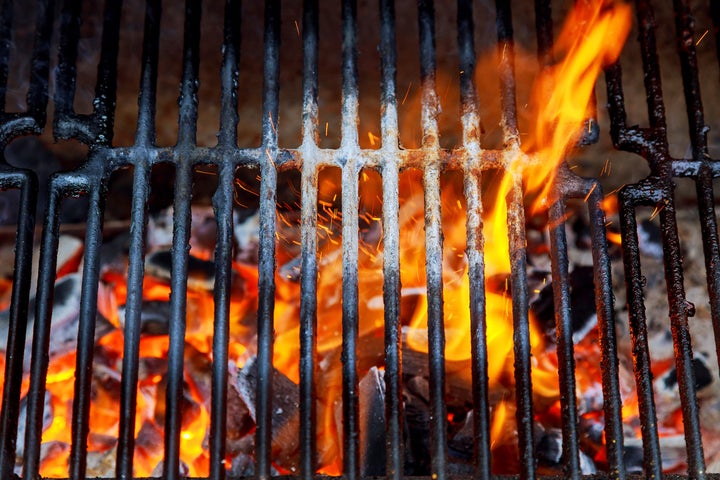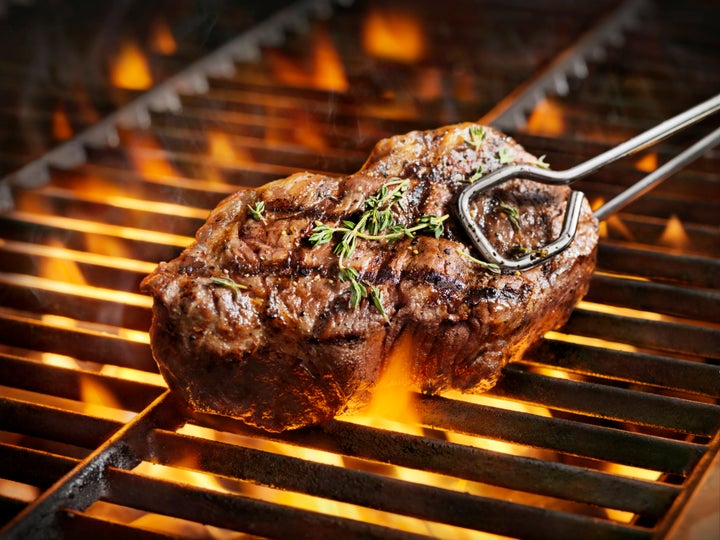We asked two grilling experts to share their tips for avoiding the most common mistakes grillers make.
When it comes to cooking, nothing feels quite as satisfying as mastering the art of the grill. In part, because of the smoky, perfectly charred but juicy, delicious results that no other form of cooking can achieve. But also because of the unique challenges that come with manning the grill: Potential pitfalls like cooking in the elements, and issues like temperature fluctuations, dangerous flare-ups and losing precious food through the grates — often with the added pressure of a backyard full of hungry guests awaiting your outdoor feast.
Whether you’re working with a humble little charcoal grill illegally perched on your fire escape or a high-end gas model with elaborate burners and bonus features, these issues are great equalizers that everyone deals with when cooking over fire.
We asked two grilling experts to share their tips for avoiding the most common mistakes grillers make.
Greg Denton is a James Beard Award winner, co-author of Around the Fire, and co-chef/owner of Ox restaurant in Portland, Oregon, which specializes in wood-fired grilling and Argentinian cuisine.
Rick Martinez is author of the New York Times bestselling “Mi Cocina” cookbook, a brand ambassador for Weber grills and co-host of the Borderline Salty podcast.
Read on for their advice on how to avoid these common mishaps so you can set yourself up for grilling success all summer long.
Mistake #1: Not cleaning your grill well or often enough
Like with any kind of cooking, cleaning up is the least fun part of grilling. But to ensure that the food you pull off your grill is safe to eat — and to protect the investment of your grill and the ingredients you put on it — it’s key to keep it well maintained.
A dirty grill invites a many unappetizing issues, including layers of unhealthy carcinogens, mold and bacteria, rust and other debris that affect the taste, quality and safety of your food — and can also attract pests. Letting excess grease build up can cause dangerous flare-ups and fires, which also affect flavor. “Nobody wants to have a flare-up when they’ve got $150 worth of gorgeous rib-eye on the grates,” Denton said. “Then it tastes like a toxic chemical fire, and smoke … but not the good kind.”
While nobody has time to clean their grill just as they’re pulling hot food off and serving, it’s important to give it a basic cleaning soon after every use (ideally later the same day but definitely by the next one). Hot grills are easier to clean than cold ones, and high heat also helps kill bacteria. So fire your grill back up, close the lid, wait for it to get hot and then scrape any debris off the grates using a wire grill brush. Denton says to look for a wide wire brush with a metal scraper at the tip and a sturdy, angled handle so it allows you to put some force into it as an extension of your entire arm — not just your wrist. To avoid flare-ups, you also want to empty the grease trap every few uses.
For seasonal grillers, Denton also recommends doing a deep clean a couple times a year (more often if you use yours year-round). He fills a large, heavy-duty bucket with degreaser, soaks the grates and gives them a good scrub. “You want to do it outside instead of in your kitchen sink. You’ll have grease and jagged, charred bits flying all over the place, and you don’t want them going down your kitchen drain.”

For a gas grill, the next step is to break it down to remove and soak smaller components like the burner covers in degreaser. Charcoal grills should get emptied of ash and other debris. For both types, you also want to wipe down the interior and exterior with a mild soap-and-water solution.
It’s a messy job, but it will keep your grill in top shape for a few months.
Mistake #2: Not knowing your hot spots
Learning which parts of your grill burn hotter than others is key to successful grilling, but figuring it out can be tricky.
Martinez recommends this simple but clever test for a gas grill: Lay slices of inexpensive sandwich bread on the grates of a cold grill, “tiling” the surface until it’s completely covered in a single layer. Close the lid and turn all the burners to medium: You want the temperature to reach about 350 degrees.
Once you smell toasty bread, turn all of the burners off. Using tongs, flip each slice of bread over ― you’ll notice where the hot spots are based on what slices are more burnt (the same test works on charcoal grills and ovens). Take a photo so you have a record of your grill’s heat map.
Mistake #3: Anxiously poking, pressing, over-flipping and opening the lid too often
It’s all too tempting to check on the progress of your food while you’re standing idle at the grill, but those impatient habits only hamper the results.
Poking, prodding and over-flipping prevent food from getting a good sear or crust and increase the chances of breaking and sticking. Opening the lid too often causes heat loss and temperature fluctuations, which delay how quickly and consistently your food cooks.
An even worse sin, if you ask Martinez, is pressing food into the grates for the thrill of the sizzle. “It hurts my heart to see someone pressing meat on the grill, or even vegetables for that matter,” he said. “All those juices that you see dripping out are what would have been that succulent, tender, juicy interior that you’ve now cast off into the flames.”
Instead, leave food undisturbed until it’s ready to flip or take off the heat. Set a timer and don’t touch your ingredients until it goes off. In the meanwhile, distract yourself by tidying up your cookspace or sipping on a drink until you hear the buzzer.
Mistake #4: Forgetting to create heat zones
It’s essential to have a zone with less heat so you can move ingredients that are done or are cooking more quickly than the others, to a cooler spot. For gas grills, that simply means setting some burners to medium or high heat, and turning others off or to low heat.
For round charcoal grills, Denton advises that instead of positioning hot coals in the middle like in the shape of a sun, push them to one side in the shape of a half-moon so that you have a cooler zone with indirect heat at one side.

Mistake #5: Not keeping everything you need within arm’s reach
We’ve all had that moment while manning the grill where we realize we’ve left the tongs, a clean platter or the barbecue sauce inside — usually at a very inconvenient time.
Ensure you won’t have to step away from the fire by doing a quick equipment check before you get started. Denton likes to gather everything on a sheet tray.
“Before you start cooking, make sure you’ve got your spatula and other tools, a towel and your glass of wine … which might be the most important,” he said. “And if you need to wash the platter you brought the raw chicken out on for serving, grab a wingman so you don’t have to step away from the fire.”
Mistake #6: Losing food through the grates
Who hasn’t lost a pricey sea scallop or perfectly grilled mushroom through the grates? Insure yourself against food loss by investing in skewers and a grill basket.
Martinez likes using grill baskets to perfectly char whole fish without tearing the delicate skin and flesh. When cooking shrimp, he uses two skewers (one positioned at the tail end, the other at the head), which both stabilizes the shrimp and minimizes the work. “That way, instead of flipping 40 individual shrimp, with just one turn and a couple minutes, you’ve got a pound of perfectly cooked shrimp that won’t fall into the fire. And, you’re done with dinner.”
Mistake #7: Prizing grill marks over doneness
Somewhere along the way, we came to think of cross-hatched grill marks as the pinnacle of grilling success. But the truth is that those elusive marks often come at the price of doneness and flavor.
“Getting that cross-hatching on both sides of burgers or steaks means flipping them four times, and you lose flavorful juices every turn,” points out Martinez. ”Plus, no one is going to be impressed by those marks if, when they cut into their steak, it’s overcooked. They’re going to be looking at the interior. And if you have a beautiful, pink, medium-rare interior ― that’s the money shot.”
If you can’t give up dark grill marks, you’re better off going for a single set on each side and doing what Denton does at home and in his restaurants: He cooks nearly everything 70% of the way on the first side, finishes it on the second and then plates it with the first “presentation side” with darker marks facing up.
Credit: Source link